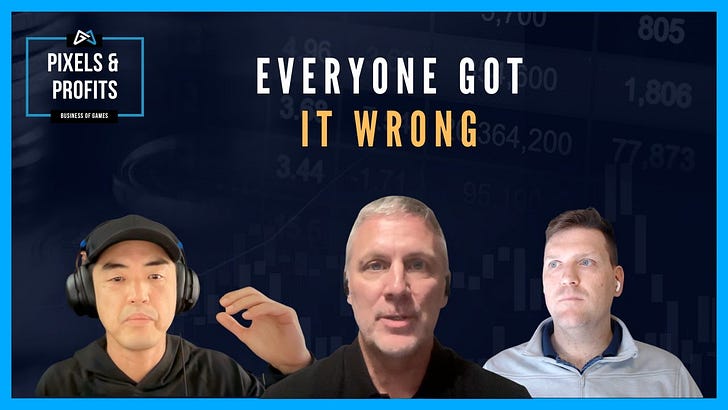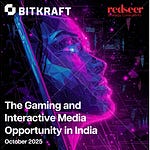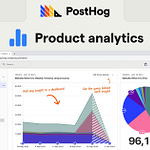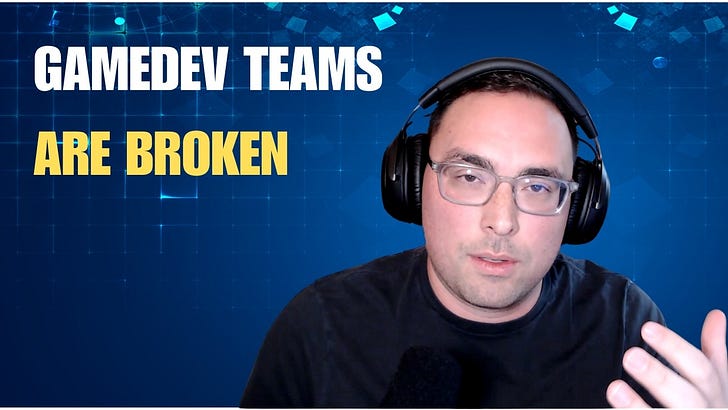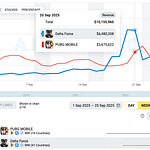“If I got an unsolicited offer from a sovereign entity that has effectively unlimited money, would I push for more? I think so.”
That’s Matthew Kanterman, CFA, gaming industry analyst, raising the question almost no one else is asking about EA’s $55 billion sale to Saudi Arabia’s Public Investment Fund: Why did EA accept this price, right now?
The gaming industry has just witnessed its largest-ever LBO, with nearly everyone focusing on the obvious story—Saudi Arabia’s gaming ambitions, Vision 2030, and strategic synergies. But the more revealing insights come from flipping the question: What made Andrew Wilson and EA’s board choose to exit public markets at this specific moment, and why does calling this a “typical LBO” fundamentally misunderstand what’s actually happening?
I sat down with two people who know precisely how these deals work: Chris Petrovic, the architect behind Zynga’s massively successful acquisition strategy (now Chairman and CBO at FunPlus), and Matthew Kanterman, CFA, who specializes in dissecting gaming M&A and exposed an accounting myth that’s been distorting EA’s operational story for years. I totally got this one wrong as well!
What emerged wasn’t just an analysis of one deal—it’s a window into how sovereign wealth is rewriting the rules of gaming M&A, why traditional efficiency metrics have been measuring EA all wrong, and what happens when “patient capital” meets an industry built on quarterly earnings pressure.
The Real Question: Why Did EA Sell Now?
Most coverage obsesses over Saudi’s rationale. That’s the easy part—they’ve publicly stated gaming is central to Vision 2030, they want to own pieces of the attention economy, and EA’s sports portfolio aligns perfectly with their massive investments in live entertainment (WWE, UFC, global football).
But Petrovic, who’s negotiated enough mega-deals to know what happens behind closed doors, immediately zeroes in on the seller’s perspective:
“I think less has been discussed around it from the seller’s perspective, which is putting yourself in Andrew and the board’s shoes. Why would they choose to take themselves off the public markets where they have a great asset and a great currency against which they can do things like raise debt and continue to have a tool for compensating employees?”
The signals pointing to pressure:
Portfolio concentration risk: Over 50% of EA’s revenue flows from just four franchises. Sports remain dominant, but what comes after Battlefield launches? Where are the next major catalysts?
Chinese competition intensifies: With developers like Tencent and NetEase dominating shooters, can Apex Legends hold its position? The competitive dynamics are shifting dramatically.
Public market scrutiny: Perhaps EA’s leadership saw pending challenges they didn’t want to navigate under quarterly earnings pressure and analyst scrutiny.
Petrovic lays out the possibilities: “Perhaps there were some palatable headwinds they were noticing in their business. Perhaps there were some pending hostile takeovers that may have been in process. Maybe they were going to head off an eventual approach from other strategics that have always been rumored. Maybe they just didn’t want to deal with the scrutiny of being able to take riskier bets and think longer term.”
Coming Soon: Within 45 days of the announcement, EA must file a proxy statement detailing any conversations with other potential buyers. If Take-Two, Disney, or others were circling, we’ll know soon whether this was EA’s preferred “white knight” scenario to avoid a more hostile alternative.
The valuation question persists: At 17-18x forward EBITDA, EA sold at a discount to Activision’s 20x multiple when Microsoft acquired them. Different market conditions, yes—but Kanterman’s question lingers: what was happening inside EA that made this deal, at this price, the right answer?
🎧 Listen on Spotify, Apple Podcasts, or Anchor
Speakers:
Matthew Kanterman. Director of Research at Blue River Financial Group.
Joseph Kim. CEO at Lila Games.
Chris Petrovic. Board Chairman and CBO at FunPlus.
The Accounting Myth That Changes the Efficiency Story
Here’s what many folks got completely wrong (including me in my last MAG newsletter) about—and why the “operational bloat” narrative needs to die.
The conventional wisdom: At $128K free cash flow per employee versus Activision’s $270K or Nintendo’s $390K, EA appears inefficient and overstaffed. Fire up the cost-cutting playbook, right?
The reality: “Prepare to be bored with accounting dorkiness,” Kanterman warns, before dropping the truth bomb that reframes everything:
“EA has been notoriously the most conservative of all the public companies. They just expense everything. So all the expenditures that go into making a game is just expense in the current period. Others like Take-Two, Activision, they’ve chosen to capitalize some of that stuff. So it doesn’t hit the P&L, it goes below free cash flow actually.”
Why this matters for everyone analyzing the deal:
Different accounting rules create incomparable metrics: US GAAP vs. international IFRS standards handle software development costs differently
Capitalization vs. expensing affects both timing and location: Where costs appear on financial statements varies by company
Hardware revenue skews the numbers: Comparing Nintendo (which sells Switch) to pure software publishers is apples-to-oranges
On a bookings basis—the comparable metric—EA performs competitively: The efficiency gap isn’t what surface numbers suggest
Kanterman continues: “When you’re comparing across geographies and even within the U.S. with Activision, Take-Two and EA, they all account for it differently. On a bookings basis it’s much more comparable and EA does compare pretty strongly.”
Translation: The case for aggressive cost-cutting isn’t as obvious as the per-employee metrics suggest. EA’s conservative accounting makes them look less efficient than they actually operate.
Why This Isn’t a Traditional LBO (And Why That Matters More Than You Think)
Call it an LBO if you must, but Petrovic is blunt about what this deal actually represents:
“I have a little bit of a different take on this in the sense that I don’t know that operational efficiency is going to be a front and center agenda item anywhere in the near to medium term.”
Wait—what? A $20 billion debt load and no focus on operational efficiency? That violates every private equity playbook rule. Which is exactly Petrovic’s point.
Silver Lake’s Real Role
“I wonder why they needed JP Morgan to float a loan when PIF could have set up a loan instrument as well. They have plenty of money to fund the whole thing. And my sense is that if anything gets squirrely around repayment, [PIF] will step in and just bridge the gap to protect their investment.”
The structure reveals the strategy:
Silver Lake and Affinity Partners likely hold high single digits to low double-digit equity stakes each
That’s perhaps 20-30% of equity, representing only ~10% of total enterprise value
They came in for optics and expertise, not control
“Silver Lake came in for optics,” Petrovic argues. “This is not a typical LBO where they have a majority position they need to protect.”
No Proctology Exam Required
Forget the stereotypical PE playbook of day-one cost purges:
Traditional LBO playbook:
Immediate 10-15% headcount reductions
Aggressive portfolio rationalization within 90 days
Quarterly debt coverage anxiety
5-7 year exit timeline driving every decision
The Saudi PIF reality:
10+ year investment horizon minimum
No public earnings reports or quarterly scrutiny
Benevolent benefactor willing to backstop debt if needed
Investment in growth is prioritized over margin optimization
Privacy to make long-term bets without explaining them to analysts
“You don’t need to worry about publicly stating your financials anymore,” Petrovic notes. “They’re not going to be tapping their wristwatches saying ‘when are we going to see the next 10% cuts?’ They want a plan for growth, they’re going to be willing to invest in it.”
The debt coverage reality: At roughly $2 billion in adjusted annual free cash flow (factoring in Battlefield’s contribution), EA covers the estimated $1.6 billion annual payment on $20 billion at 8% interest. And if concerns arise? Kanterman points out that PIF also owns Scopely—they could theoretically bundle cash flows or simply inject more equity.
“There’s a world where they could put part or all of Scopely’s cash flow in the box for the creditors,” Kanterman explains. “If the Saudis were concerned about debt coverage, they have a lot of levers to pull.”
The Mobile Question: Integration or Independence?
EA derives 15-18% of revenue from mobile (primarily FC Mobile and Sims Mobile). PIF owns Scopely, one of mobile’s most sophisticated operators known for aggressive UA strategies. The obvious question: massive synergies incoming?
The less obvious answer: probably not the way most people expect.
Why Full Integration Is Unlikely
Structural separation: EA and Scopely remain distinct entities under common ownership—not a merged company. Any collaboration requires independent business justification from both sides.
“Unlike Zynga and EA, this is going to have to be arm’s length dealings,” Petrovic explains. “These are two related entities that still operate somewhat independently because they’re not under common ownership in the on-paper sense.”
Anything Scopely does—whether taking over publishing, licensing IP, co-development—requires their own business case. Same for EA. They may have a pole position in negotiations, but this isn’t a top-down “you will collaborate” mandate.
The Best Practices Opportunity
Rather than full integration, expect knowledge transfer:
Where Scopely excels:
Sophisticated UA optimization and scaling strategies
Monetization framework development
Live operations and player engagement
Using global resources efficiently
Where EA mobile has struggled: According to industry sources, EA’s mobile UA function has been basic and not aggressive enough—the opposite of Scopely’s reputation.
“If they can drive efficiencies and best practices in UA to scale [FC Mobile and Sims Mobile], there’s huge synergies and that falls down pretty quickly,” Kanterman observes.
But he’s skeptical about the smaller titles: “You take a $5 million mobile game and make it $10 million, you’re probably losing money adding $5 million in revenue. You’re probably losing EBITDA to get that incremental revenue. So it’s not worth it.”
The opportunity: Optimize the few large existing mobile titles (FC Mobile, Sims Mobile) through Scopely’s proven frameworks. Don’t waste energy rescuing small struggling games.
The Take-Two Cautionary Tale
Nearly four years after Take-Two acquired Zynga for $12.7 billion, not a single mobile title based on Take-Two’s massive IP library (GTA, Red Dead, Bioshock, Borderlands) has launched through Zynga.
“This deal has been over four years old and not one hint of any Take-Two mobile IP coming to bear through Zynga,” Petrovic notes. “So you can maybe expect the same here, especially because there’s actually no public market expectation of that synergy having to happen within a certain period of time.”
Don’t hold your breath for rapid EA-Scopely IP co-development.
The Real Growth Drivers: Sports, Asia, and Transmedia
Sports: The Strategic Core
The synergies between EA FC (formerly FIFA) and Saudi’s sports investments practically write themselves:
PIF’s sports portfolio includes:
Ownership stakes in TKO (WWE/UFC)
Major investments in global football/soccer
Saudi Pro League transformation ambitions
Pursuit of the 2034 World Cup hosting
The transmedia vision: “I think it’d be very interesting if you start thinking about a world where you’re interacting with live events inside of FC, inside of the core video game, playing along with it and rethinking what it means to watch a soccer game,” Kanterman suggests.
“There’s a vision there that makes a lot of sense that can really make EA FC... not just the marquee video game for football soccer, but the marquee entertainment hub for football soccer.”
This could include:
Live event integration with real matches
Streaming rights innovation
Interactive viewing experiences
Blurring lines between gaming and sports consumption
Sports isn’t just EA’s most stable business—it’s the strategic centerpiece of the entire Saudi entertainment vision.
Asia: The China Opportunity (and Necessity)
EA has consistently underperformed in Asia relative to market potential. Meanwhile, Chinese developers now dominate certain categories globally—not just in China.
The competitive reality: “Enough writing is on the wall for Western developers to acknowledge that they just don’t have the muscle to develop as commercially effective, scalable games in certain categories as China,” Petrovic argues.
With Affinity Partners (Asia/China specialists) in the consortium and Saudi’s global ambitions, expect M&A targeting Chinese development capabilities:
Potential targets:
Century Games (proven Roblox operator—Kanterman notes potential for “Sims for the next generation” on Roblox)
Studios focused on using Chinese development talent for global markets like MiHoYo
Proven operators who can either create global hits or level up EA’s existing studios… hmm, again like MiHoYo
“I wouldn’t be surprised if some combination of Scopely, EA, and their benefactors penetrate the China market with some kind of M&A to bring those capabilities under the banner,” Petrovic predicts.
The dual opportunity: Use Chinese development expertise for both cost efficiency (AAA budgets are escalating unsustainably) and competitive quality (Chinese shooters are beating Western ones).
What Could Go Wrong: The Execution Risk Is Real
Five years from now, this could be a strategic masterpiece or a cautionary tale. The risks aren’t trivial.
The Franchise Concentration Problem
With 50%+ revenue from four franchises, any major stumble cascades:
Battlefield’s reception matters enormously
Apex Legends faces fierce competition from Chinese shooters
AAA development challenges (Dragon Age struggles) haven’t disappeared
What comes after the current roadmap?
The Studio Rationalization Question
EA’s famously siloed structure—Vancouver (FC), Florida (Madden), Maxis (Sims), BioWare—may eventually face pressure.
Kanterman is direct: “Do I think the day this deal closes they’re going to shut down Studio X and Studio Y? No. But I do think they’re going to give these studios a chance. And I wouldn’t quite call it a fiefdom, but these are kind of their own entities. I do think there is going to be a period of ‘prove it or what do we do with this?’”
Studios that fail to align with Saudi Arabia’s broader vision (sports, transmedia, global entertainment) may face rationalization. BioWare, which has struggled with recent releases, represents this risk most acutely.
But Kanterman emphasizes: “Do I think it’ll happen on day one or day 60, day 90? No, I think it’s going to be a much longer process.”
The Financial Tightrope
Even with patient capital, the fundamentals matter. At $2 billion annual free cash flow covering $1.6 billion debt payments, there’s limited cushion without growth or efficiency gains.
“Obviously they’re astute investors and they’re not just going to keep funding something in perpetuity that’s going to bleed money,” Petrovic cautions. “There is a point at which time I’m sure that they’ll run out of patience. But I think that patience timeline is a lot longer than it would be if it was a typical private equity timeframe.”
Industry Implications: Who Controls Gaming’s Future?
EA’s privatization accelerates a concerning trend for the gaming industry’s public market presence.
The Shrinking Public Market
After this deal closes, Take-Two becomes the only remaining independent major publisher at scale in U.S. public markets.
The ripple effects:
For private companies:
Fewer public comparables for valuation benchmarking
Reduced strategic acquisition exit opportunities
Less institutional capital interest in gaming startups
For the industry:
Decreased investor visibility and understanding
Less scrutiny of business practices (good and bad)
Concentration of ownership among sovereign wealth funds and tech giants
“When you think about just what that means for investor interest at a high level in the sector, it’s not a positive,” Kanterman argues. “Having fewer large public players reduces the exit opportunities for strategic acquirers.”
The Geopolitical Question
Between Scopely, Niantic (Pokémon Go), and now EA, Saudi Arabia will control roughly 10% of the global gaming market. Add Chinese company dominance, and a question emerges:
“Who do you want owning this attention economy—the time and money spent in gaming?” Kanterman asks. “That’s an important question everyone needs to think about.”
American and European independent studios are shrinking, while sovereign wealth and Chinese conglomerates are expanding. The concentration of gaming ownership into non-Western hands deserves more discussion than it’s getting.
The Optimistic Counter-Narrative
Petrovic offers a different lens: “The more large scale companies that go private, in theory, the more that there is opportunities for them to lean into innovation and long term thinking.”
He sees cyclical opportunity: “We are in a natural cycle in our industry that perhaps is leading to contractions, consolidation. We could very well be on our way to the next upcycle in gaming once we’ve come out of this new innovation phase driven by privatization, enabled by technologies like AI, and driven by the ongoing size of gaming within entertainment.”
Next wave candidates: Discord (IPO expected), Roblox (growing), Epic Games (perpetually rumored), and new entrants could replenish the public gaming ecosystem within 3-5 years.
“I have no doubts that we’ll come out of this stronger,” Petrovic concludes. “We’re just going through growing pains and filling out this teenage body of ours.”
The 5-Year Outlook: Success on Different Terms
Here’s the fundamental insight that changes how to evaluate this deal:
Traditional metrics might be irrelevant.
“At the end of the day, it almost doesn’t matter how it turns out,” Petrovic argues. “EA is just a cog in the larger wheel. Even if it doesn’t [hit financial targets], it really won’t be called a failure because it’s feeding so many other things and upstream aspirations.”
Measuring Success Differently
Traditional view: Revenue growth, margin expansion, debt coverage, franchise health, return on investment
Strategic view:
Contribution to Saudi Arabia’s entertainment and sports dominance
Success in securing the 2034 World Cup and major sports events
Development of Saudi Arabia as a global entertainment destination
Control of attention economy touchpoints across 2+ billion players
Reputation transformation on the global stage
“These are things at levels we’ve never seen before in terms of big picture,” Petrovic notes. “Us focusing on EA’s billion swing here or there is going to become so inconsequential to the larger picture that it really won’t matter from that perspective.”
Kanterman’s pragmatic view: “It also depends on how you measure success here. There’s the financial angle where like does $8 billion of revenue become $7 or $10? Obviously if it shrinks financially, they’re losing. But that doesn’t necessarily mean that they’ve lost.”
If FC integrates deeply with live football events, if EA helps secure the World Cup, if Saudi Pro League becomes a top-10 global league—the deal succeeds even if EA’s standalone financials plateau or decline modestly.
Key Takeaways
Rethink the efficiency narrative: EA’s conservative accounting makes direct peer comparisons misleading. The operational bloat thesis isn’t supported by comparable bookings-based metrics.
This isn’t about short-term cost-cutting: Expect long-term investment in growth rather than the typical LBO playbook. Silver Lake’s involvement appears primarily optical. Patient capital changes everything.
Mobile synergies will be limited: Expect best practices sharing between EA and Scopely for major titles (FC Mobile, Sims Mobile), but not the aggressive integration many anticipate. Arm’s-length dealings will likely prevail.
Sports is the strategic core: The real opportunity lies in making EA FC the central entertainment hub for global football, integrated with Saudi’s massive sports investments and transmedia vision.
Watch for China M&A: With Affinity Partners involved and Chinese developers dominating key categories, expect acquisitions targeting development capabilities for both quality and cost efficiency.
Studio rationalization will come—slowly: Entities like BioWare that can’t align with the broader Saudi vision face long-term risk, but not the typical day-90 purge of traditional PE deals.
Industry concentration accelerates: Take-Two becomes the lone major independent US publisher. The implications for startup exits, valuations, and who controls gaming’s attention economy deserve serious consideration.
Measure success differently: EA’s financial performance might matter less than its strategic contribution to Saudi Arabia’s broader entertainment and geopolitical goals. This is a 10+ year play, not a 5-year flip.
The EA acquisition isn’t just about one company changing hands. It’s about a fundamental shift in who controls gaming’s attention economy, how much patience capital will have for AAA development’s escalating costs, and whether privatization enables the bold innovation bets that public market constraints have suppressed.
The smart money isn’t asking whether EA will grow 10% or shrink 10%. They’re asking what happens when sovereign wealth deploys patient capital at unprecedented scale in gaming, and whether the traditional playbook for measuring success still applies.
We’re witnessing gaming’s first truly patient capital experiment at mega-scale. The rules have changed. We just don’t know yet if that’s good or bad.
About the Experts:
Matthew Kanterman, CFA is a gaming industry analyst specializing in M&A, financial analysis, and market strategy. LinkedIn
Chris Petrovic is currently Chairman and Chief Business Officer at FunPlus, and previously served as President of Publishing at Zynga, where he led the company’s transformative acquisition strategy. LinkedIn
What’s your take on the EA acquisition? Hit reply with your thoughts—I read every response.

